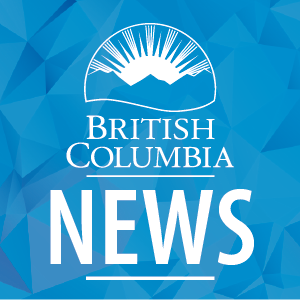One year after its launch on May 30, 2024, the Province’s racist incident helpline is making a difference for people in B.C. experiencing racism, with approximately 94% of callers reporting their needs were met.
“Racism has no place in B.C., but we know it exists, and we are determined to continue to fight it in all its forms, through all the tools available at our disposal,” said Niki Sharma, Attorney General. “As part of that work, we are proud to provide this resource that is connecting so many people in need with services that can help them heal and reclaim their sense of safety and belonging. We will continue to strengthen and grow the helpline’s network so that nobody ever has to navigate the impact of a racist incident on their own.”
The racist incident helpline is a toll-free, multilingual service for people who have been subjected to discrimination based on the colour of their skin, culture, ethnicity or place of origin. Callers receive support, guidance and referrals to local community-support services. One year after its launch, the helpline has received calls from 807 people seeking help dealing with racism, and has made more than 2,329 referrals to support services. This call volume is more than double the number of racism-specific calls reported by the state of California for the first year its hate helpline was operational (2023-24), despite California’s population being seven times the size of B.C.’s.
“I know this is a long process, but it makes me feel better to talk about everything,” said one caller to the helpline, whose family was experiencing harassment, racism, aggression, micro-aggressions and intimidation from their neighbour on a shared yard. “Thank you for your time and for listening to me. I feel less pressured now. This has been really helpful.”
This caller accepted referrals to resources for tenant rights, legal assistance and mental-health supports.
On average, each caller was directed to three support services, indicating people coping with racism require help on multiple fronts, such as legal advice, peer support and mental-health resources. To help strengthen the efficacy of these support networks, the Province invested $2.2 million in 32 community organizations in the 2023-24 fiscal year, for enhanced services and to better meet the urgent and diverse needs of those affected by racism in their communities.
“The racist incident helpline is a core pillar of government’s efforts to counter racism and discrimination in B.C.,” said Jessie Sunner, parliamentary secretary for anti-racism initiatives. “It bridges a gap between people dealing with the trauma of racism and the essential services they need to heal. We are committed to continuing to empower local advocates, communities and organizations so that we can together create a province where everyone feels safe, supported and valued.”
The toll-free helpline is available from 9 a.m. to 5 p.m. on weekdays, at 1 833 457-5463 (1 833 HLP-LINE). Service is offered in more than 240 languages, and after-hours callers can request a call back during regular hours. For immediate assistance or in the case of an emergency, people should call 911.
Quotes:
Helpline staff member –
“As a racialized person with lived experience myself, for me this extends beyond just a job – it is an honour to do this work. Getting to support and hold space for members of racialized communities who have experienced or witnessed a racist encounter brings me a sense of fulfilment and purpose. Amidst the daily landscape of race- and hate-motivated harms that can feel all-consuming, divisive, isolating and othering, each person I am able to support and each conversation I have is an act of solidarity.”
Saša Loggin, executive director, Skeena Diversity Society –
“This funding has provided us with an invaluable opportunity to dedicate staff not only to respond to incidents of racism but also to develop workshops and resources. Through this, we have deepened our connections to organizations and resources across the northern region, honouring the unique characteristics of different communities while also turning our shared humanity into a source of strength.”
Boma Brown, executive director, Support Network for Indigenous Women & Women of Colour –
“Our clients, who are racialized women, often experience racism at any point in their day, making culturally informed counselling an essential resource that we are able to provide thanks to this grant. This support is vital for empowering women and fostering healing in our communities.”
Penny Bradley, executive director, Alex House, of the Association of Neighbourhood Houses of B.C. –
“As a neighbourhood house in South Surrey and White Rock, we know that when people feel a strong sense of belonging, they thrive. Our approach is to bring together people from diverse backgrounds to learn from each other, because we believe that when we learn together, we grow together. This grant allows us to widen our reach and deepen our connections with the community. That is how we can create a community of allies that believe strongly in anti-racism.”
Learn More:
View the full list of racist incident helpline grant recipients here: https://news.gov.bc.ca/files/RacistIncidentHelplinegrantrecipients.pdf
For more about the racist incident helpline, visit: https://racistincidenthelpline.ca/
For more about the Anti-Racism Act, visit: https://news.gov.bc.ca/30655
For more about the Resilience BC Anti-Racism Network, visit: https://www.resiliencebc.ca/
A backgrounder follows.




